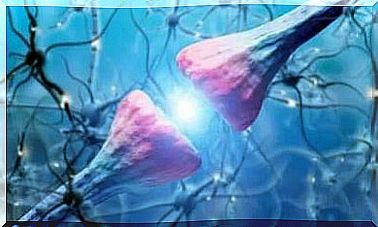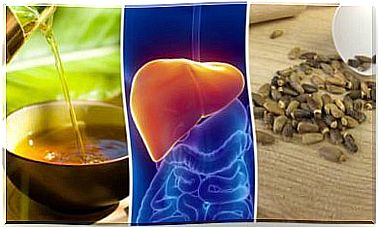Green Mediterranean Diet: Advantages And Disadvantages

The Mediterranean diet is one of the healthiest and most popular in the world. A study published in the journal Heart tells us about a new version with more benefits than the traditional diet. It is about the Mediterranean green diet, which improves certain health indicators by consuming more antioxidants and replacing red meat with vegetable proteins.
The diet continues to be based on foods such as whole grains, fruits, vegetables, legumes, herbs, nuts and olive oil. However, it has 3 main components that we will discuss in detail below. Want to know more about the green Mediterranean diet?
What is the green Mediterranean diet?
The green Mediterranean diet is a more ecological version than the traditional one, because it focuses on green vegetables and does not include red meat or its derivatives. A scientific study was carried out in an overweight population, the aim of which was to verify whether a higher intake of polyphenols and a low consumption of animal proteins have positive effects on health. The results were gratifying.
This type of diet decreases the consumption of calories and carbohydrates, but increases that of protein. According to Heart, the caloric intake ranged from 1,500 to 1,800 calories for men and from 1,200 to 1,400 calories for women. In total, carbohydrates were only 40 grams and proteins 100 grams.
Some authors have stated that polyphenols are the main sources of antioxidants in green vegetables. For this reason, this diet includes 3 essential components:
What foods can be eaten in the Mediterranean green diet?
The distinctive ingredient of the green Mediterranean diet is lentils or Mankai in the form of a smoothie, 100 g per day. It is also recommended to consume 30 g of nuts and up to 3 cups of green tea.
Of course, lentils can be replaced with other sources of vegetable protein, such as legumes, soy derivatives (tempeh and tofu) or seeds. The following options are also valid:
- Hummus
- Falafel
- lentil
- Quinoa
- Red onion
- fruits
- Eggs
- Cheese
- Yogurt
- Olive oil
- Spices
- Tahini
- SPICES
The benefits of a green Mediterranean diet
A recent study in the journal Heart revealed the benefits of this food model for general health. It even suggests that this variation goes beyond the positive effects of the traditional Mediterranean diet.
Specifically, the study involved 294 people with moderate obesity, who were separated into 3 dietary groups. The first was the control group, which had a healthy diet; there was also a group of consumers of the traditional Mediterranean diet and another of the green Mediterranean diet. All groups complied with calorie restrictions and exercise.
After 6 months, weight loss and cardiovascular and metabolic risk factors were assessed. The participants who followed the green Mediterranean diet lost 6.2 kilograms, those with the traditional diet 5.4 kilograms, and the control group only 1.5 kilograms.
Men who followed the green diet lost more abdominal fat than those who chose the traditional diet. An obesity study discusses the relationship between excess abdominal fat and the risk of heart disease, stroke and type 2 diabetes.
There was a 4% decrease in “bad” cholesterol or LDL, compared to 1% in those with a traditional diet. The control group reduced their cholesterol by only 0.2 milligrams / milliliter.
Other cardiovascular and metabolic risk factors also improved among those who consumed the green Mediterranean diet. A decrease in blood pressure and C-reactive proteins, associated with inflammatory disorders, has also been observed.
These results allowed an almost double decrease in the 10-year Framingham risk score. This calculation predicts the likelihood of severe heart disease over the next decade.

Possible disadvantages
It seems difficult to find disadvantages of the green Mediterranean diet. Even so, before adopting this type of diet, it is essential to consider some aspects. For example, it is a model with a fixed plan of calories, carbohydrates and proteins, being less flexible compared to the traditional Mediterranean diet.
On the other hand, lentils are a special ingredient that cannot be found anywhere. Due to this, the consumption of polyphenols may be limited when lentils are substituted with other sources of plant proteins.
Some people tend to consume lentil shake at dinner or at one of the main meals. This is another disadvantage because it tends to affect food preferences and eating style.
Consulting a nutritionist is essential
There is no doubt about the benefits that the Mediterranean green diet offers for well-being and health. Despite this, it is recommended to consult a nutritionist before adopting this diet model. The professional will be tasked with setting body boundaries.
It should not be ignored that nutritional needs may vary depending on age, health and other factors. Thus, professional judgment must prevail, beyond how healthy a certain diet can be.









